
Related
Guests
- Seth Rosenfeldauthor of the new book, Subversives: The FBI’s War on Student Radicals, and Reagan’s Rise to Power. He was an award-winning a reporter for the San Francisco Examiner and San Francisco Chronicle for almost 25 years.
Investigative journalist Seth Rosenfeld’s new book, “Subversives: The FBI’s War on Student Radicals, and Reagan’s Rise to Power,” is based on more than 300,000 pages of records Rosenfeld received over three decades through five Freedom of Information lawsuits against the FBI. The book tracks how then-FBI director J. Edgar Hoover ordered his agents to investigate and then disrupt the Free Speech Movement that began in 1964 on the Berkeley campus of the University of California. In part two of our interview, Rosenfeld discusses how Ronald Reagan collaborated with the FBI to target California’s student movement and strengthen Reagan’s own rise to power. Click here to watch part 1. [includes rush transcript]
Transcript
JUAN GONZÁLEZ: We turn now to another story about secret government agents and surveillance. Today we continue the conversation we began Thursday with Seth Rosenfeld, longtime investigative reporter and author of a new book, Subversives: The FBI’s War on Student Radicals, and Reagan’s Rise to Power. The book is based on more than 300,000 pages of records Rosenfeld obtained through five Freedom of Information lawsuits against the FBI over the course of three decades. It looks at how then-FBI director J. Edgar Hoover ordered his agents to investigate and then disrupt the Free Speech Movement that began in 1964 on the Berkeley campus of the University of California. The protests prevailed and helped spawn a nationwide student movement.
AMY GOODMAN: Seth Rosenfeld reveals how FBI records show agents used, quote, “dirty tricks to stifle dissent on the campus” and exposes new details about how—future U.S. President Ronald Reagan’s secret role as an FBI informant. In the book, Rosenfeld interweaves stories of four main characters: the FBI’s J. Edgar Hoover; Ronald Reagan, who was running for governor of California at the time; Clark Kerr, then the University of California president and a target of scorn from both Reagan, Hoover and student activists; and legendary Free Speech Movement leader and orator, Mario Savio.
Seth Rosenfeld, welcome back to Democracy Now! When we were speaking yesterday, we left it at Reagan, who was not yet governor, who—you have uncovered, in a way that has not been revealed before, the level of spying he was doing for the FBI.
SETH ROSENFELD: Yes, in response to my Freedom of Information Act lawsuits, the FBI was forced to release more than 10,000 pages concerning Ronald Reagan in the years prior to his becoming president. And these records show that he was much more involved with the FBI than previously known. He was more active as an FBI informer in Hollywood, reporting on other actors who he suspected of subversive activities, and that later, in response to this, Hoover and other FBI officials returned the favor by giving Reagan personal and political help that went beyond the FBI’s proper jurisdiction.
JUAN GONZÁLEZ: Seth, you also point out how Reagan actively sought to disrupt or divide several major Hollywood organizations that he believed, or had reason to believe from the FBI, were being controlled by communists. Could you talk about some of that?
SETH ROSENFELD: Yes. Reagan talks a little bit about his involvement with left-wing groups in Hollywood and how the FBI opened his eyes to the alleged communist infiltration of these groups. And one of these groups was called the Hollywood Independent Committee for the Arts, Sciences and Professions. It was a broad-based group that had many members from all different political perspectives. And Reagan, on being informed by the FBI that it was allegedly run by communists, proposed a resolution for this group, and he and other members brought this forward at a meeting of the group. And the resolution was to the effect that the group repudiates communism. And this was a very divisive measure, and it led to a split within the group. And Reagan says that he—in testimony, in court testimony, he says he proposed another divisive measure to a second group, the American Veterans Committee, in Hollywood in the '40s. And the reason the measure was so divisive is that, at this time in history, there were very broad coalitions within Hollywood that included people from all ranges of political backgrounds who would come together around specific issues. So, that's one of the ways that Reagan sought to disrupt these groups. He also states that he took the minutes from one of these groups, the Hollywood Independent Committee. He actually pilfered the minutes, and the FBI records show that these minutes later found their way into FBI files.
JUAN GONZÁLEZ: He also tried to undermine a very bitter strike of the set builders, didn’t he? Even though he was, himself, a member of and later a president of the Screen Actors Guild.
SETH ROSENFELD: Yes. While Reagan was president of the Screen Actors Guild, there was a very bitter strike in Hollywood led by the Conference of Studio Unions, which was kind of an independent union challenging the status quo. And Reagan and other members of the Screen Actors Guild board of directors took the position that the Screen Actors Guild should not support that strike. Reagan later wrote that he was convinced that communists were behind the strike, although the evidence is that the strike had some legitimate issues that they were pursuing.
AMY GOODMAN: I want to play a clip of a speech of Ronald Reagan when he was running for governor in ’66 and spoke out about the Free Speech Movement.
RONALD REAGAN: There is a leadership gap in Sacramento, a morality and a decency gap. And there’s no more tragic evidence of this than what has been perpetrated on the campus of Berkeley across the Bay. There—there, a small minority of beatniks, radicals and filthy speech advocates have brought shame on a great university, so much so that applications—applications for enrollment have dropped 21 percent, and there’s evidence they will continue to drop even more.
Now, we’ve all read the press reportings of the report that was handed in by the Senate subcommittee and its charges that the campus has become a rallying point for communists and a center for sexual misconduct. I’ve never seen that report. I only know what I’ve read in the paper about it. But I’ve had in my position information that verifies, at least in part, what the press has said about that report. As a matter of fact, I have here a copy of a report of the district attorney of Alameda County. It concerns a dance that was sponsored by the Vietnam Day Committee, sanctioned by the university as a student activity, and that was held in the men’s gymnasium at the University of California. The incidents are so bad, so contrary to our standards of human behavior, that I couldn’t possibly recite them to you here from this platform in detail.
This is not only a sign of a leadership gap—or not the only sign. It began a year ago, when the so-called free speech advocates, who in truth have no appreciation for freedom, were allowed to assault and humiliate the symbol of law and order of policemen on the campus. And that was the moment when the ringleaders should have been taken by the scruff of the neck and thrown out of the university once and for all.
AMY GOODMAN: That was Ronald Reagan speaking as he ran for California governor. In that same speech, he called for hearings to investigate allegations against professors accused of being communists and for said faculty—should be required to sign a code of conduct. Talk about these files that Ronald Reagan, who then became governor, is talking about.
SETH ROSENFELD: Yes, well, that speech was given in May 1966 at the Cow Palace during the Republican primary. And you can hear Reagan focusing on the University of California, the Berkeley campus, in particular. And by this time in his campaign, he has made the campus protest, the Free Speech Movement, antiwar protest and civil rights protest, a major issue. And he’s not only complaining about those protests, he’s using them as a way to attack the incumbent Democrat, Pat Brown. He’s saying that these pose—these show that there’s a leadership gap and a morality gap at the center of the state’s Democratic Party.
Reagan, by this time, had formed a very close and cordial relationship with the FBI. That’s a phrase that FBI officials used to describe their relationship with Reagan. This relationship was based on his years in Hollywood, where he was more active as an informer. He had named a number of people to the FBI, sometimes on very scant evidence. In one instance, in the documents, he meets a young actress at a cocktail party, and she comes up to him and says, “You know, I have serious concerns about the blacklist. I think it’s unfair to people.” And Reagan disputes this with her and later reports her to the FBI. And the FBI, as a result of that, opens a file on her. So, by the time he’s running for governor, he has a very close relationship with the FBI.
And soon after he’s elected in November 1966, he phones the FBI, as one of his first acts in office, and he requests a secret briefing about the protests at UC Berkeley, not only about students and professors engaged in dissent, but also about members of the Board of Regents, specifically liberal members of the Board of Regents, and about the university president, Clark Kerr.
JUAN GONZÁLEZ: Now, Seth, you also—
SETH ROSENFELD: Not long after this, Reagan attends his first meeting of the Board of Regents, and at this meeting, Clark Kerr is fired.
JUAN GONZÁLEZ: Yeah, you’ve mentioned that not only was Reagan—did Reagan particularly target Clark Kerr, but J. Edgar Hoover also felt that Clark Kerr was a menace as the president of the University of California. Could you talk about Kerr himself, his history and his role, in terms of the FBI targeting him, and Reagan? Because a lot of people also forget that Reagan was the first person to institute tuition at the University of California, which, before him, had been free to all people who were able to get into the California university system.
SETH ROSENFELD: Yes. Clark Kerr is one of the towering figures in American higher education. He was born in 1911, coincidentally the same year that Ronald Reagan was born. Kerr came from a rural part of Pennsylvania. His father was a farmer and a teacher. And Kerr worked on the farm as a boy and attended a one-room schoolhouse. Kerr has written in his memoirs that he had a teacher at this one-room schoolhouse named Miss Elba, who took an interest in him and had a profound impact on him. She helped him become a good student, and as a result of that, he went on to attend Swarthmore College. So, Kerr has always felt, from his very early days, very strongly about the power of education to transform people’s lives.
At Swarthmore, Kerr becomes a Quaker. He believes in nonviolence, and he works for social justice through the American Friends Service Committee and then moves to California, does graduate work at the University of California, Berkeley, and later becomes the first chancellor at Berkeley in the 1950s. In 1958, he’s elected—he’s appointed president of the University of California system. Kerr helps expand the University of California into one of the greatest public universities in history and opens the door to higher education for thousands of people. One of the things that Kerr accomplishes is called the Master Plan for Higher Education. This was a system of junior colleges, four-year colleges and public universities, graduate schools, like UC Berkeley, that was set up around California and was then emulated around the country and internationally. And this really transformed the educational system and opened it up to many, many people.
At the same time Kerr was doing this, he opened—also opened the University of California campus to free speech in many ways. He lifted the ban against communist and socialist speakers. And his explanation at the time was, the university is not engaged in making ideas safe for students, it’s engaged in making students safe for ideas. He believed that if students were well educated, they could hear ideas from any point of view and then make the right decisions. However, J. Edgar Hoover didn’t appreciate that point of view. He viewed Kerr as potentially subversive and certainly as somebody who was not in sympathy with Hoover’s own political views. He blamed Kerr for opening the campus to activism and was very angry at Kerr later, during the Free Speech Movement, for not cracking down more severely on student protesters.
So, in my Freedom of Information Act lawsuit, I requested any and all records concerning Clark Kerr. And the FBI released over a thousand pages on him. And what these documents show is that the FBI did normal background investigations of Kerr, because he was in a high position at the university and was overseeing the nuclear radiation labs, but that the FBI also used these background investigations as a pretext to try and sabotage his career. And one way the FBI did this, under J. Edgar Hoover, was by gathering allegations against Kerr and then sending them to the White House to Lyndon—President Lyndon Johnson, even though the FBI had investigated the allegations and knew that they were untrue.
And the FBI also leaked information to conservative members of the Board of Regents in an effort to convince the Regents to fire Kerr. But Kerr had a very staunch ally in Governor Pat Brown. And as long as Pat Brown was the governor of California, Kerr would remain as president of the University of California. So when Ronald Reagan was elected in November of '66, FBI officials saw this as a breath of fresh air. They finally had an ally in the governor's office. And they complied with Governor Reagan’s request to meet with him soon after he was elected. They gave him an extensive briefing about Berkeley, about Clark Kerr, about his opponents on the Board of Regents. And then, very shortly thereafter, Kerr was fired at the University of California.
AMY GOODMAN: I want to—
SETH ROSENFELD: Moving—I’m sorry.
AMY GOODMAN: I want to turn to an interview from the ’60s with FBI director J. Edgar Hoover speaking about how the American Communist Party was committed to the overthrow of the government by force and violence.
J. EDGAR HOOVER: I think that communism is as serious a menace to the United States as it ever was, if not more so. The tendency to judge the strength of the Communist Party by its membership in numbers is fallacious and, I think, can be a—can lead us into very serious trouble, because today you have in charge of the Communist Party a hardcore fanatical group of members who are dedicated to the overthrow of our government by force and violence. The Communist Party itself is a part of an international criminal conspiracy for the destruction of the American way of life.
AMY GOODMAN: So, that was J. Edgar Hoover. If you could, Seth Rosenfeld, fit this into how the government dealt with Clark Kerr, but also, though, the—he was also unpopular among the students, ultimately.
SETH ROSENFELD: Yes, he was. In the early years of the Cold War, particularly right after World War II, there was great concern about communism. There were links between the Communist Party in the United States and the Soviet Union, and the Soviet Union did attempt to use some Communist Party officials in the United States to gather nuclear secrets and other information from the University of California. But by 1957, the U.S. Supreme Court had ruled that being a member of the Communist Party was not, in and itself, illegal. There had to be further evidence that a member of the Communist Party was engaged in espionage or breaking a law. Despite this court ruling, the FBI continued to intensively investigate communists, socialists and, according to congressional findings, in the ’70s, virtually anybody who challenged the status quo, and amassed more than half a million files on American citizens.
So, at Berkeley, Hoover was extremely concerned about dissent, and he focused on Clark Kerr and tried to get him fired. At the same time, the students, student activists, viewed Clark Kerr as their adversary. Clark Kerr had in fact opened the campus in many ways to free speech. He believed in public debate. But he had not responded quickly enough to the students’ challenge in 1964 against a campus rule that still prohibited free speech on campus. Kerr came from the point of view that keeping politics off campus would protect the university from outside political influences, and therefore protect academic freedom. But many of the students, particularly Mario Savio and other people who had been involved in the civil rights movement, saw this rule as an outrageous limitation on their free speech rights. Savio had spent that summer in the South registering blacks to vote. He had faced down the Ku Klux Klan. He had been assaulted by the Ku Klux Klan. And he returned to campus in that fall of ’64 only to find that this rule prohibited him from even handing out a leaflet on campus. So, when Clark Kerr failed to lift this rule, the students came to view him as their enemy.
Clark Kerr was really the man in the middle. On the one hand, he had Ronald Reagan challenging him, accusing him of being weak on student protesters. On the other hand, he had Mario Savio and other student activists who viewed him as their enemy. And then, behind the scenes, unbeknownst to anybody at the time, was J. Edgar Hoover’s FBI, secretly working to get Clark Kerr fired and, meanwhile, secretly giving Ronald Reagan personal and political help.
AMY GOODMAN: Seth Rosenfeld, we just have 30 seconds, but what were you most shocked by? I mean, that’s a big question to ask for someone who’s done this research and gotten so many hundreds of thousands of pages from the FBI and done this research for 30 years. But as you publish this book this week, Subversives: The FBI’s War on Student Radicals, and Reagan’s Rise to Power, what most shocked you?
SETH ROSENFELD: I think what I found most shocking is the extraordinary breadth and depth of the FBI’s activities concerning the University of California and its focus on First Amendment activities under J. Edgar Hoover. The documents show that the FBI took techniques developed for use against adversaries during wartime and turned them against people involved in legitimate public dissent at UC Berkeley. And ultimately, my book, Subversives, is a cautionary tale about the dangers that secrecy and power pose to democracy.
AMY GOODMAN: Well, we want to thank you very much for being with us. The book Subversives has come out this week. It is by Seth Rosenfeld. He was an award-winning reporter for the San Francisco Examiner and San Francisco Chronicle for almost 25 years. Thanks so much.
This is Democracy Now! When we come back, we remember the late great Howard Zinn. He would have been 90 years old today.

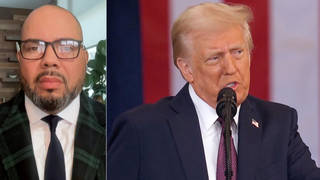
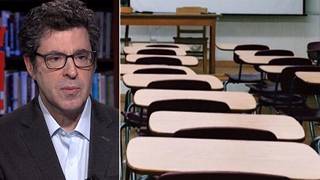
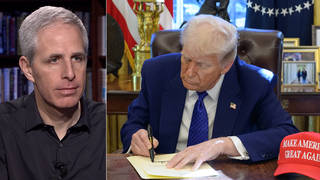
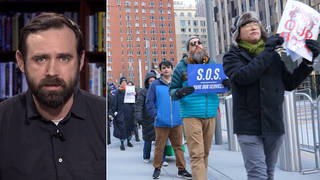

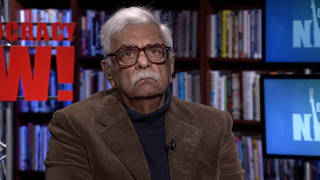
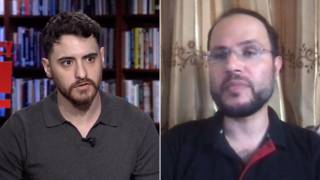
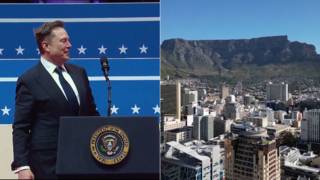

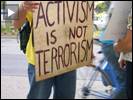
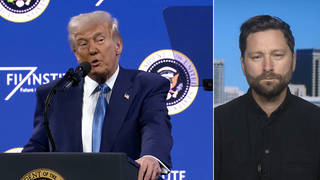
Media Options